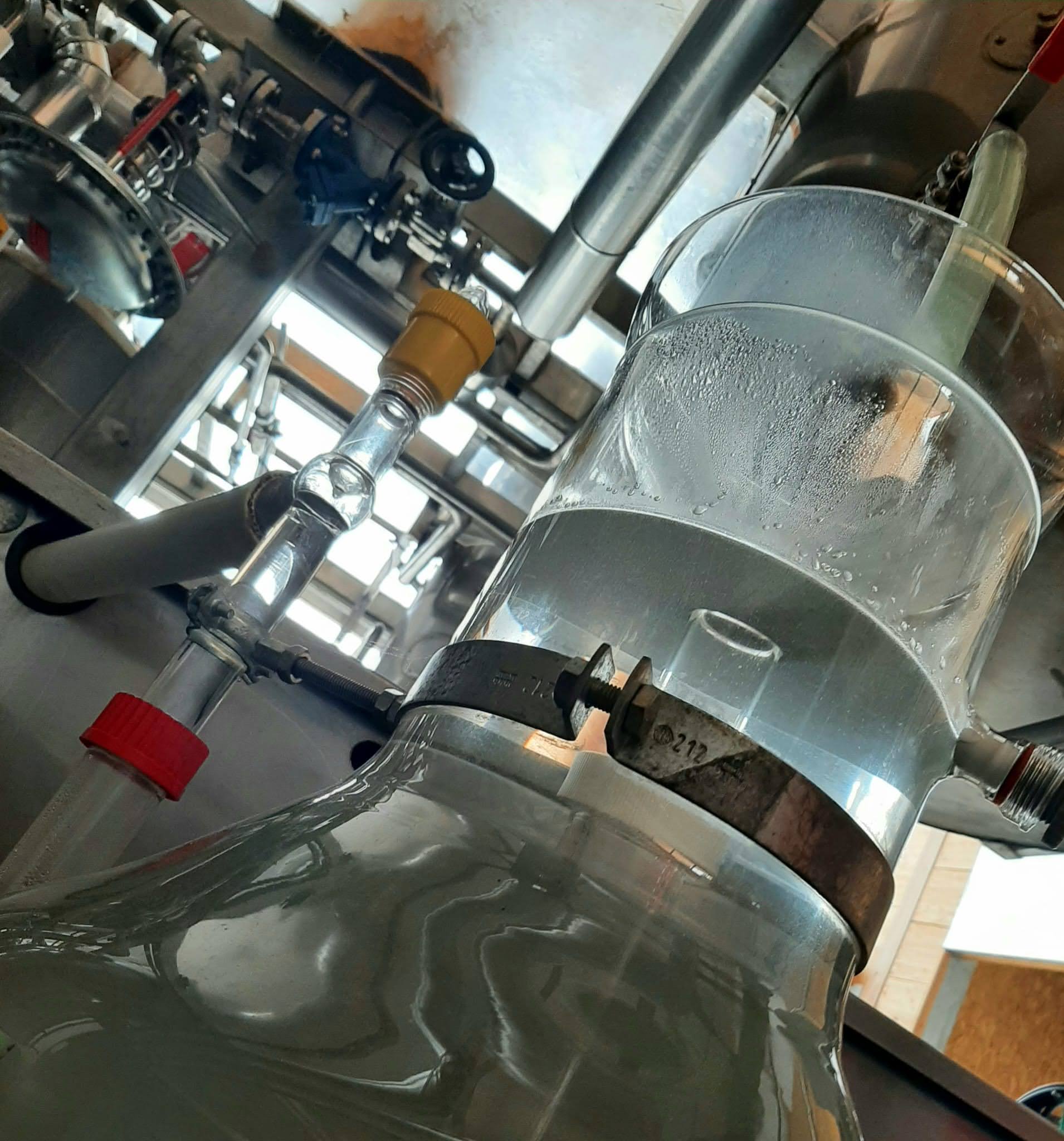Our hydrosols are naturally stabilized by the essential oils they contain. They are pure, microfiltered, unpasteurized and have not had any added alcohol or other preservatives. They are distilled according to a rule of one liter per kilogram of plants in order to optimize the concentration of active ingredients.

What is a hydrosol?
To understand aromatic hydrosols, it is best to describe how they are obtained. Like essential oils, these are extracts directly from distillation. The steam, passing through the plant in the still, picks up the aromatic compounds of the essential oil contained by the plant. This steam carries them through the swan neck then into the coil. It is therefore a “training” with spring water vapor. All these volatile compounds then condense in the coil to give a distillate which flows into the Florentine vase throughout the distillation.
Part of the molecular and aromatic cocktail thus obtained is then decanted, most often on the surface of the Florentine vase: the essential oil.
Generally below, we find the aromatic hydrosol: distilled spring water which is enriched after decantation with aromatic active ingredients and molecules contained in the water of the fresh plant. Certain compounds, identical to those present in the essential oil, are found there in lower concentration. Others, water-soluble, are only found in hydrosol.
Throughout the distillation process, the hydrosol, like the essential oil, will gradually be enriched with “light” compounds first, then heavier components. It is indeed a complete cocktail that we ultimately seek to patiently obtain. To do this, we homogenize the hydrosol that has flowed out during the entire distillation, so that it is truly “complete”, truly representative of the potential of the plant.
All that remains is to filter it before storing it in the best conditions for its good conservation. The very careful manufacturing work guarantees well-charged hydrosols which therefore remain stable when the bottle is kept closed, away from heat and light.
During this long distillation process, the smell of the hydrosol evolves over the molecular contributions. Its perfume will continue to be refined in the weeks or even months following distillation thanks to subtle biochemical adjustments. The hydrosols must not be subject to any additional addition (preservatives, water, alcohol, etc.) until their final packaging.
Culinary, medicinal and cosmetic uses
Milder than essential oils, hydrosols do not require the same precautions for use:
- they can be consumed as a pleasure drink at the rate of one tablespoon in a glass of water for example (hot or cold) or a dilution of approximately 1 to 10 of water. Thanks to the chefs with whom we work, we continue to discover their multiple potential in the culinary field.
- they are also very popular for the medicinal properties of the plant from which they come, occasionally as one would take herbal tea, or as a treatment diluted in the bottle of spring water to drink during the day.
- They can be used externally: application to the face or body during or after washing, rubbing into the scalp after rinsing the shampoo. They have a moisturizing effect in common, some more soothing, others more tonic depending on the plant.
- Finally, they can be used in atmospheric diffusion (sprays) as a purifier or simply for odorous power.


Purity and “AB” labeling
Like our essential oils, our hydrosols are 100% pure and natural, directly from extraction. We distill the fresh plant respecting a rule of 1 liter of hydrosol per 1 kilo of fresh plant.
NB: Currently, certain "organic cosmetic labels" recognize as floral water a product which has been obtained by distillation, at a rate of 20 liters per kg of dry plant. Not to mention other additions accepted after the distillation stage...
Our hydrosols are not pasteurized or “cut” with water or alcohol, and are without the addition of preservatives. They therefore retain the primary use, food, of a plant cultivated in organic agriculture (AB).







